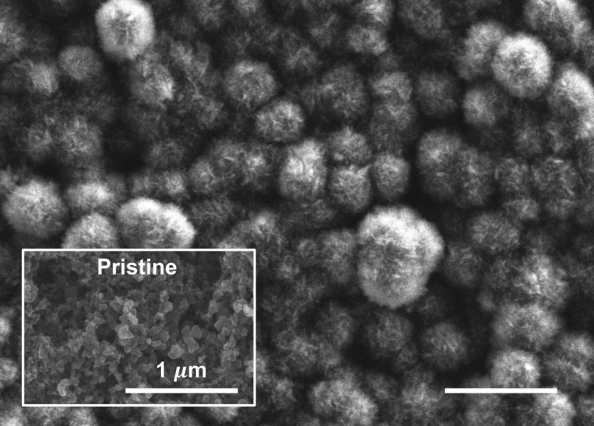We would love to find ways to reduce carbon dioxide as a threat to our climate with an ever-decreasing timeline for accomplishing that task. University of Illinois at Chicago and Massachusetts Institute of Technology (MIT) have made inroads into creating a carbon dioxide battery that uses CO2 as an energy storage component. Amin Salehi-Khojin, associate professor of mechanical and industrial engineering at UIC’s College of Engineering, explains, “Lithium-carbon dioxide batteries have been attractive for a long time, but in practice, we have been unable to get one that is truly efficient until now.” A 7X Battery The incentive to use CO2 comes from lithium-carbon dioxide batteries having a specific energy density more than seven times greater than conventional lithium-ion cells. Unfortunately, until now, Li-CO2 batteries haven’t been rechargeable – at least for a reasonable number of cycles. Now, researchers at the University of Illinois at Chicago have demonstrated, “lithium-carbon dioxide batteries can be designed to operate in a fully rechargeable …
As Common As It Gets – But Hard to Get
Since Michael Faraday first split water into hydrogen and oxygen in 1820, scientists have puzzled over how to do this economically in large quantities. The Blog continues to run stories about “artificial leaves,” low-energy approaches to dividing the hydrogen in water from the oxygen, and doing so economically. The current most widely-used approach to capturing hydrogen is pulling it from natural gas via several processes. The Office of Energy Efficiency and Renewable Energy explains the process on its web site. Steam-methane Reforming In steam-methane reforming, “high-temperature steam (700°C–1,000°C) is used to produce hydrogen from a methane source, such as natural gas. In steam-methane reforming, methane reacts with steam under 3–25 bar pressure (1 bar = 14.5 psi) in the presence of a catalyst to produce hydrogen, carbon monoxide, and a relatively small amount of carbon dioxide. Steam reforming is endothermic—that is, heat must be supplied to the process for the reaction to proceed.” In a “’water-gas shift reaction,’ the carbon …
Hybrid Batteries in Hybrid Vehicles?
Frances White of the Pacific Northwest National Laboratory (PNNL) reports that a new anode quadruples the life of a test lithium-sulfur battery and could lead to much lower costs for electric vehicles and large-scale energy storage. This blog has noted that many researchers focus on development of better cathodes, or anodes, or electrolytes exclusively, neglecting a more holistic, or whole battery approach to their delving. PNNL scientists have a reason for focusing on anodes, having found that a “battery with a dissolved cathode can still work.” What dissolves the electrodes in a battery? “Unwanted side reactions,” according to PNNL, cause the battery’s sulfur-containing cathode to disintegrate slowly and form polysulfide molecules that dissolve into the battery’s electrolyte liquid. This becomes a thin film that forms on the surface of the lithium-containing anode, and grows until the battery will no longer operate. Rather than trying to stop sulfur leakage from the cathode as others have, PNNL added a protective graphite shield …

